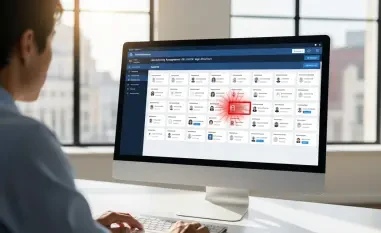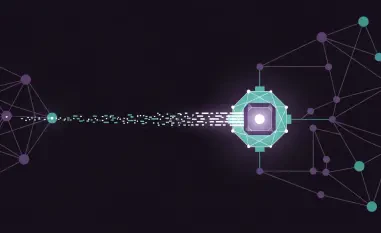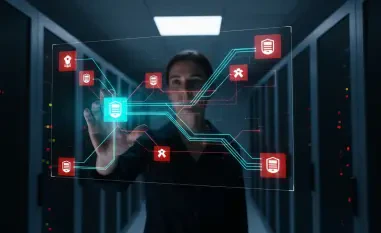In today’s hyper-connected digital environment, where cyber threats lurk around every virtual corner, the tools designed to shield systems from harm can sometimes become the very targets of sophisticated attacks. Recently, two medium-severity vulnerabilities have come to light in CrowdStrike’s Falcon Sensor for Windows, a cornerstone of endpoint protection for countless organizations worldwide. Identified as CVE-2025-42701 and CVE-2025-42706, these flaws could allow attackers with local access to delete critical files, posing a substantial risk in post-compromise scenarios despite not enabling remote exploitation or initial breaches. This revelation underscores a harsh reality: even trusted security solutions are not immune to weaknesses that malicious actors might exploit to deepen their foothold in compromised systems.
Understanding the implications of these vulnerabilities is paramount for businesses and IT teams that depend on endpoint detection and response (EDR) platforms to safeguard their networks. While CrowdStrike has acted swiftly to address the issues with patches and hotfixes, the incident serves as a stark reminder of the evolving threat landscape where defensive tools themselves can become liabilities. This article explores the technical nature of these flaws, their potential impact on affected systems, and the broader context of increasing attacks on EDR software. Additionally, it delves into actionable steps organizations can take to mitigate risks and maintain robust security postures in light of such challenges.
Diving into the Technical Flaws
Unpacking the Race Condition Issue
The first vulnerability, known as CVE-2025-42701, arises from a timing discrepancy classified as a Time-of-Check to Time-of-Use (TOCTOU) race condition within the Falcon Sensor for Windows. This flaw manifests when the sensor evaluates a file’s state, such as its permissions, but fails to re-validate that state before executing subsequent operations. This brief window of inconsistency allows an attacker with local code execution privileges to manipulate the file system, tricking the sensor into deleting files it should not. Rated at medium severity with a CVSS 3.1 score of 5.6, this issue does not permit remote access or initial system breaches. However, in environments where an attacker has already gained a foothold, it becomes a dangerous tool for disrupting system stability by targeting critical files, potentially crippling security mechanisms or operational integrity.
Further analysis reveals the nuanced danger of this race condition in real-world scenarios. Although the vulnerability requires pre-existing local access, its ability to facilitate arbitrary file deletion can significantly escalate the impact of a breach. For instance, deleting system logs or configuration files could obscure an attacker’s activities, making it harder for defenders to detect or respond to ongoing threats. This amplifies the importance of addressing such flaws promptly, as they serve as force multipliers in the hands of adversaries who have already bypassed initial defenses. The technical intricacy of exploiting a race condition also highlights the sophisticated nature of modern cyber threats, where even fleeting timing gaps can be weaponized to devastating effect.
Exploring the Logic Error in Validation
The second flaw, identified as CVE-2025-42706, stems from a logic error in how the Falcon Sensor validates the origin of file operations on Windows systems. Due to insufficient checks, a malicious process running locally can supply false origin data, deceiving the sensor into deleting unintended files. With a slightly higher CVSS 3.1 score of 6.5, this vulnerability is also categorized as medium severity and shares the limitation of requiring local access for exploitation. It cannot be leveraged for remote attacks or privilege escalation, but its potential to target arbitrary files poses a serious threat to system integrity, especially in scenarios where attackers aim to disrupt operations or evade detection by erasing evidence of their presence.
Delving deeper into the implications, this logic error underscores a critical oversight in the validation process that can be exploited to undermine the very purpose of endpoint protection. By deleting security-related files or even components of the Falcon Sensor itself, attackers could effectively blind defenders, prolonging their dwell time within a network. This vulnerability’s impact is particularly concerning in high-stakes environments where maintaining visibility into threats is non-negotiable. It serves as a reminder that even subtle errors in software logic can have outsized consequences when exploited by determined adversaries, emphasizing the need for rigorous testing and continuous improvement in security tool development to prevent such lapses from becoming attack vectors.
Industry Response and Wider Implications
Swift Action and Open Communication
CrowdStrike’s response to the discovery of these vulnerabilities has been notably proactive, reflecting a commitment to customer security and transparency in handling potential risks. Upon identifying the flaws through a combination of internal security engineering efforts and contributions from their bug bounty program, the company swiftly released patches and hotfixes to address both issues. Public disclosure was coordinated to coincide with the availability of these updates, minimizing the window during which attackers could exploit the vulnerabilities. Additionally, CrowdStrike has reported no evidence of active exploitation in the wild, and their threat-hunting teams continue to monitor for any signs of abuse using advanced tools to ensure ongoing protection.
This transparent approach extends beyond mere remediation, as CrowdStrike has actively communicated with users through detailed guidance on applying updates and verifying system integrity. The involvement of external researchers via the bug bounty program, with specific credit given to contributors like Cong Cheng for responsible disclosure, highlights a mature security posture that values collaboration. By aligning with industry best practices for vulnerability management, such as simultaneous patch release and disclosure, the company reinforces trust among its user base. This response sets a benchmark for how security vendors can handle similar challenges, demonstrating that rapid action coupled with clear communication can mitigate the fallout from even significant software flaws.
Rising Attacks on Endpoint Defenses
The emergence of these vulnerabilities in the Falcon Sensor is not an isolated incident but rather a symptom of a broader trend in the cybersecurity landscape where EDR tools are increasingly targeted by adversaries. Attackers recognize that disabling or tampering with endpoint protection software can provide a pathway to persistence and lateral movement within networks, often without triggering immediate alerts. This tactic is becoming more prevalent across the industry, as similar logic and timing flaws have been uncovered in competing EDR solutions, indicating a systemic challenge that transcends any single vendor or platform.
The growing focus on EDR tools as attack surfaces underscores a dual reality: while these solutions are critical for detecting and responding to threats, they also introduce potential liabilities if not meticulously maintained. Adversaries exploiting such vulnerabilities can disrupt defenders’ visibility, a cornerstone of effective incident response, thereby extending their ability to operate undetected. This trend amplifies the urgency for organizations to adopt comprehensive security strategies that do not rely solely on a single tool. It also highlights the necessity for vendors to prioritize continuous auditing and hardening of their software, ensuring that protective mechanisms do not inadvertently become points of failure in the face of evolving cyber threats.
Strategies for Protection and Resilience
Identifying and Updating Vulnerable Systems
For organizations using the Falcon Sensor on Windows, addressing these vulnerabilities begins with identifying affected systems and applying the necessary updates without delay. The flaws are specific to the Windows version of the software, with no impact reported on macOS, Linux, or legacy system variants. CrowdStrike has released a permanent fix in version 7.29, alongside targeted hotfixes for earlier versions and legacy operating systems such as Windows 7 and Windows Server 2008 R2. Administrators can utilize a query tool within the Falcon console to pinpoint vulnerable endpoints, ensuring that patching efforts are both efficient and comprehensive. Post-update verification of sensor health and telemetry is strongly advised to confirm that protection remains intact.
The importance of timely updates cannot be overstated, as delays in applying patches can leave systems exposed to potential exploitation in post-compromise scenarios. CrowdStrike has streamlined the process for customers using Auto Update policies by rolling out fixes based on release channels, while those with manual or fixed deployments must take proactive steps to implement the updates. This structured approach to remediation helps minimize disruption while addressing the immediate risk posed by arbitrary file deletion capabilities. Organizations are encouraged to prioritize this task, integrating it into their broader patch management workflows to ensure that endpoint security tools continue to function as intended without becoming liabilities.
Building Layered Security Defenses
Beyond the immediate step of patching, adopting a defense-in-depth strategy is essential to mitigate risks associated with vulnerabilities like those found in the Falcon Sensor. This approach involves implementing multiple layers of security controls to reduce exposure, starting with tightening endpoint privilege controls to limit the potential damage an attacker with local access could inflict. Monitoring for unusual file deletion activity can also serve as an early warning system, enabling rapid detection of malicious behavior that might exploit such flaws. These proactive measures help safeguard critical systems even in the event of a breach, reducing the likelihood of cascading failures.
Another critical component of a layered defense is maintaining recent, tested backups to counteract the risk of data loss from malicious file deletions. Regularly validating the integrity of security tool files, including those of the Falcon Sensor, ensures that any tampering or corruption is quickly identified and addressed. These practices collectively create a resilient security posture that does not hinge on the infallibility of a single solution. By diversifying protective mechanisms and embedding redundancy into security processes, organizations can better withstand the impact of vulnerabilities in endpoint protection tools, ensuring continuity and visibility in the face of sophisticated threats that target defensive software.
Fostering Trust Through Continuous Improvement
The discovery of these vulnerabilities serves as a pivotal moment for reinforcing trust in security tools through continuous improvement and vigilance. Endpoint protection platforms like the Falcon Sensor are often the first line of defense against cyber threats, making their reliability paramount to organizational safety. Vendors must commit to rigorous testing and regular updates to preemptively address potential flaws, while also fostering open channels for vulnerability reporting through initiatives like bug bounty programs. This proactive stance not only mitigates risks but also demonstrates accountability to users who depend on these tools for their cybersecurity needs.
Equally important is the role of transparency in maintaining confidence among stakeholders. When vendors like CrowdStrike openly acknowledge issues, provide clear remediation steps, and actively monitor for exploitation, they build a foundation of trust that is critical in the high-stakes realm of cybersecurity. For organizations, this incident underscores the necessity of partnering with vendors who prioritize such practices, while also investing in internal capabilities to audit and validate the effectiveness of deployed security solutions. By aligning with providers committed to ongoing enhancement and by cultivating a culture of continuous security improvement, businesses can navigate the complexities of modern threats with greater assurance.













